Kuttu ki Puri (Without Potatoes!)
Kuttu ki Puri are gluten free puris made with buckwheat flour. These crispy puris are especially popular during the fasting period of Navratri in India!
This post may contain affiliate links. Please read our disclosure policy.
Kuttu ki Puri is a deep fried Indian bread which is made with buckwheat flour (kuttu atta) and is gluten free. In India, this crispy puri is particularly made during the fasting season of Navratri. You only need 4 ingredients to make this puri (including water) and they are best enjoyed with vrat wale aloo.
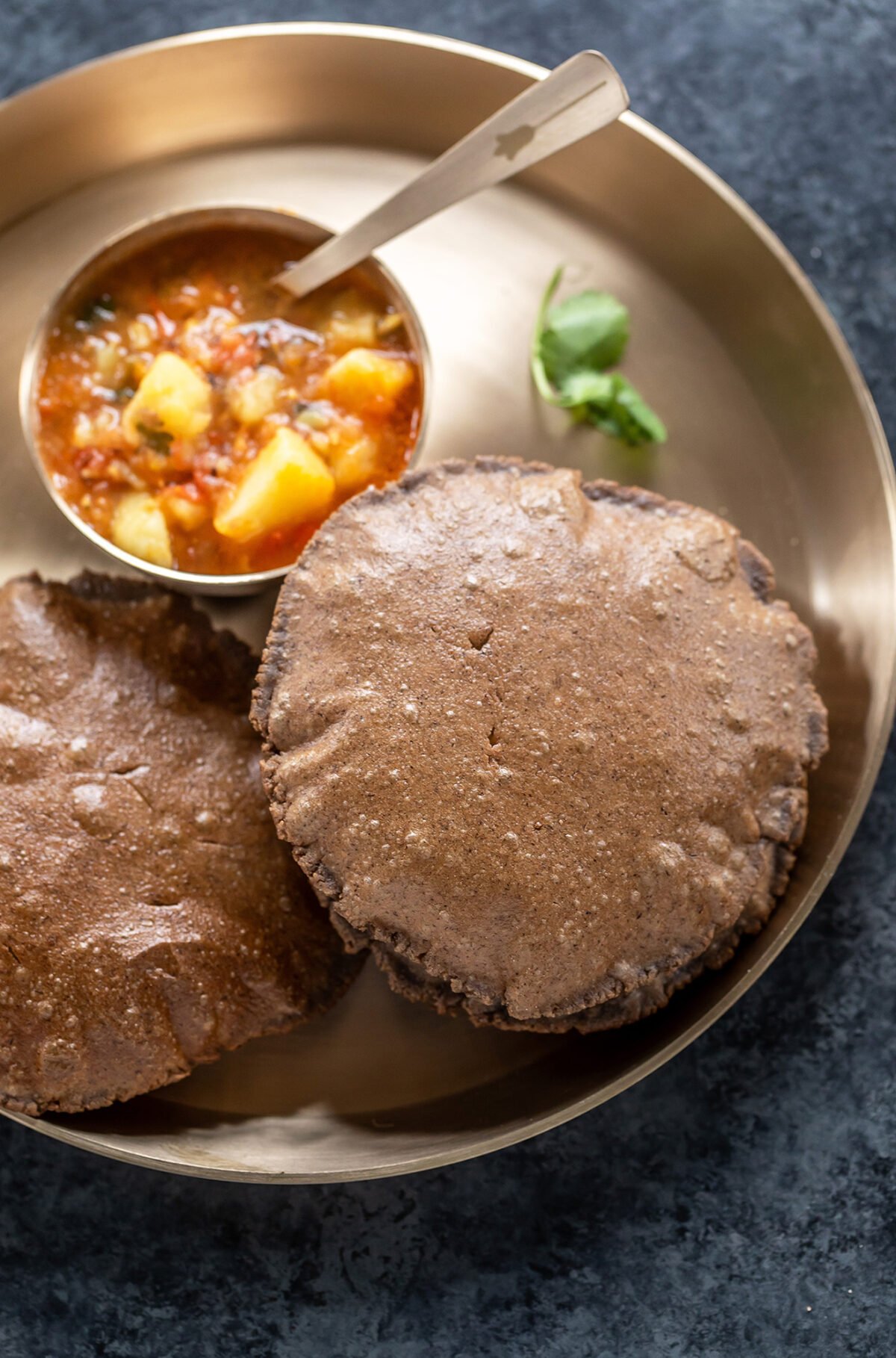
When I was little, I used to call kuttu ki puri “kali puri” as in black puri (kali in Hindi means black). My dad always kept all 9 days of Navratri fast ever since I can remember. And we were not allowed to keep fast as kids so, during Navratri, when mom made kuttu ki puri for dad, it felt like a special meal.
She would make regular puris for us (the ones made with atta) but I would beg her to give me “kali puris”. Honestly, I looked forward to all the fasting food so much, from lauki kheer to sabudana kheer, sabudana khichdi , these puris and vrat wale aloo. Dad would always share with me fasting food during Navratri. I miss those wonderful childhood days!
My mom would always add boiled and mashed potatoes to her kuttu puris to bind the dough (since buckwheat flour is gluten free). However, I follow the same principle as I do for ragi roti and these come out perfect without any binding agent. Hot water gelatinises the flour (starch granules swell causing the dough to become more firm and easy to work with) and so you can roll these easily without any added potatoes! I feel these are lighter compared to my mom’s since I don’t use potatoes to bind them.
Texture & Taste
If you never had kuttu ki puri, the taste and texture is different from a regular puri which is often made with atta (whole wheat flour).
- Kuttu ki puri is more crisp compared to regular puri. It is best eaten immediately. Unlike regular puris, kuttu puris become hard as they cool down.
- They have a nutty/earthy taste. If you have had buckwheat flour in any form (like pancakes, waffles), then you know the taste!
- The puris are naturally gluten free.
How to Make Kuttu ki Puri
Add 1 cup water (240 ml/8oz) to a pan on medium high heat. Add 1/2 teaspoon of salt (use sendha namak/rock salt if making for fasting) and 1/2 teaspoon of oil to the water. You can also add some ajwain seeds if you eat ajwain during fast.

Let this water come to a boil.
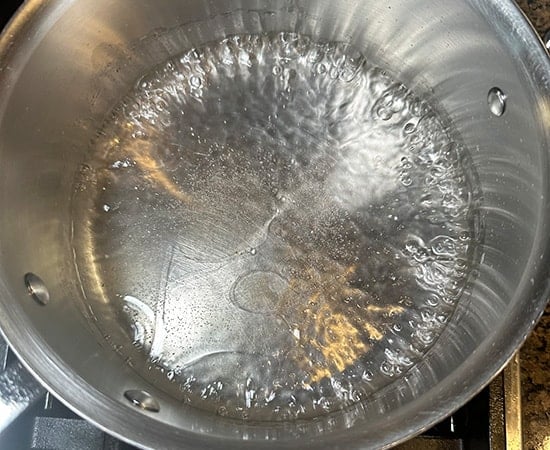
As soon as it starts boiling, add 2 cups (260 grams) kuttu ka atta (buckwheat flour) to the pan. Turn off the gas.
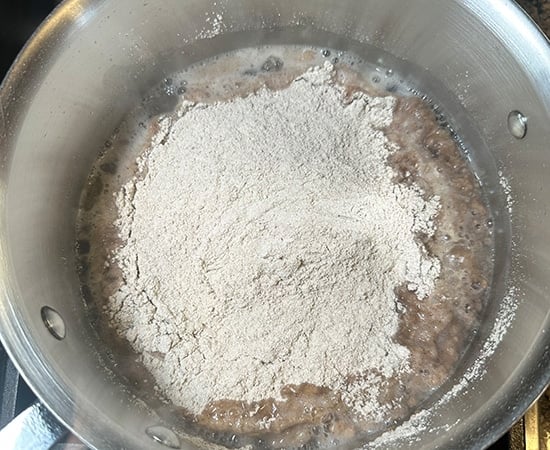
Stir the flour with the water using a spatula. Cover the pan and let it sit like that for 3 to 4 minutes. It will look all crumbly and that’s okay.
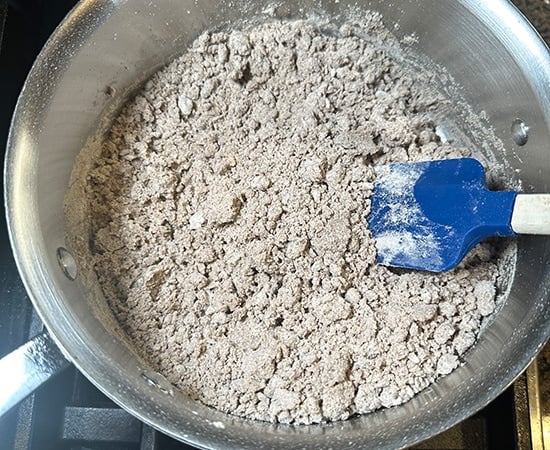
After 3-4 minutes, the flour would be easier to touch as it would have cooled down a little. Transfer everything to a large plate or paraat. Start bringing the dough together using your hands.
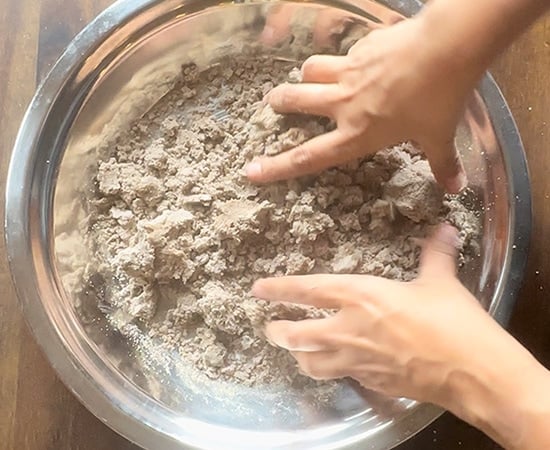
At this point add the remaining 1/2 teaspoon oil and more hot water as needed. I added 2 tablespoons more warm water at this point. Mix until you have a smooth dough. There’s no need to knead this dough, just bring it together. Cover the dough and let it rest for 5 minutes.
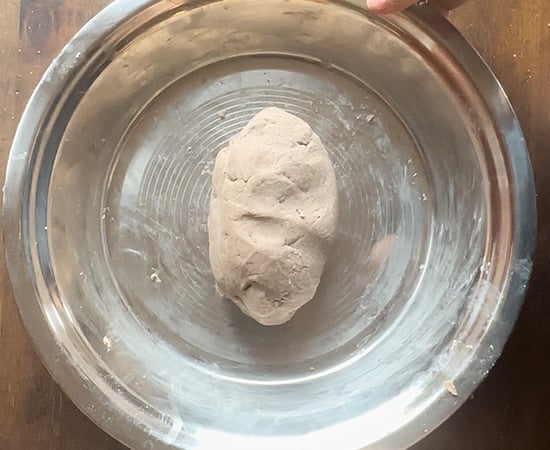
Take a small portion of the dough (around 40 grams) and roll it to a round. Make sure there are no cracks in this dough ball. Dab a little oil on the dough ball and also on the rolling pin and then start rolling the puri with a rolling pin.
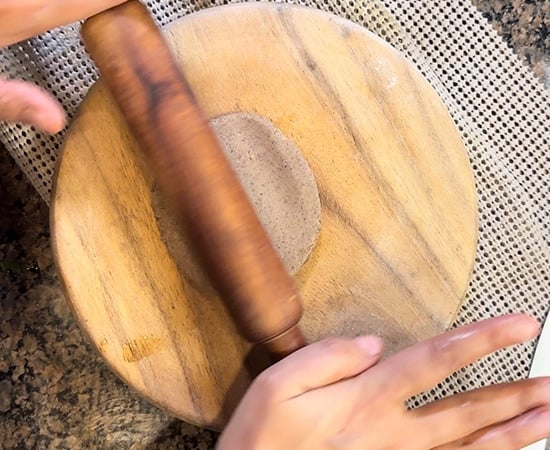
Roll the puri to a circle of around 5-inches in diameter. You can use some dry buckwheat flour while rolling it if the rolling pin is sticking to the dough.
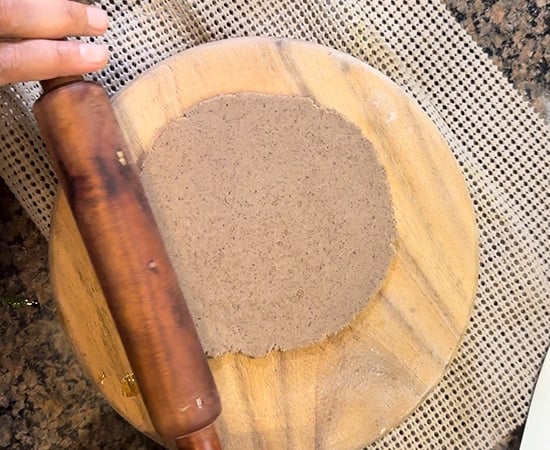
The thickness of these kuttu puris will be slightly more than regular wheat puris.
Because we boiled the water and scalded the flour, you will be able to roll the puris very easily using your regular chakla and belan. I actually roll all the puris first and keep them stacked before frying. These don’t even stick to each other so you can easily stack them. You will not need any parchment paper. If you are having trouble though, roll between 2 sheets of parchment paper.
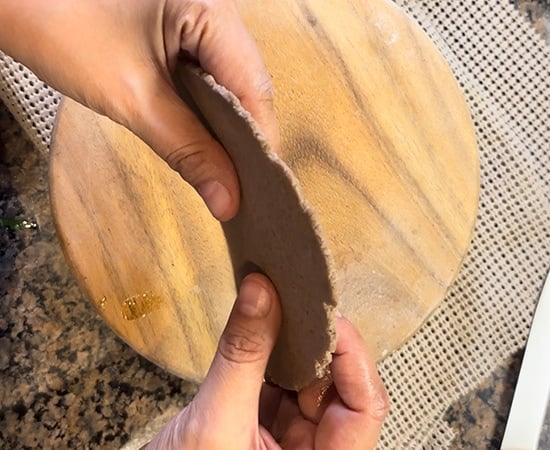
Now heat oil in a kadai on medium-high heat to fry the puris. If the heat is low, the puris will absorb a lot of oil and if it is too high, the puris will burn without being cooked. To test if the temperature is okay, drop a small portion of the dough into the hot oil, if it comes up instant, it means the oil is too hot. If it comes up gradually, it means it is the right temperature.
Now gently drop one of the rolled puris into the hot oil.
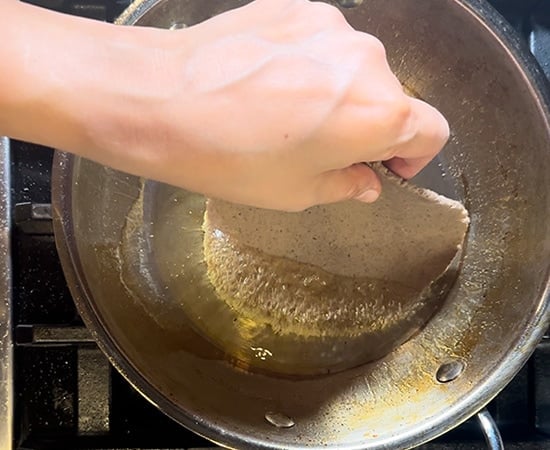
Immediately press it with a slotted spoon so that it puffs up.
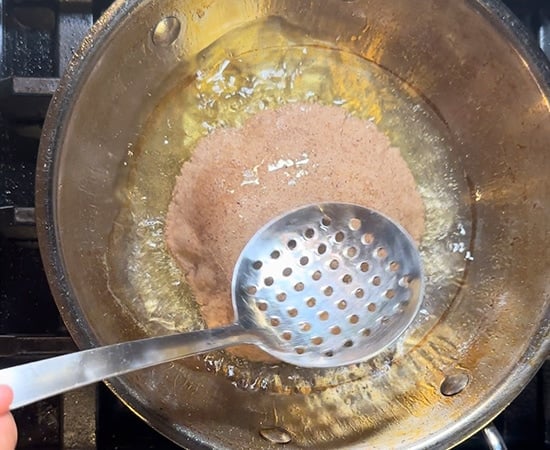
Once this side is puffed, flip and cook the other side as well. Then drain the puri on a paper towel to remove excess oil. Fry all the puris similarly. Serve kuttu ki puri with dahi aloo or vrat wale aloo!
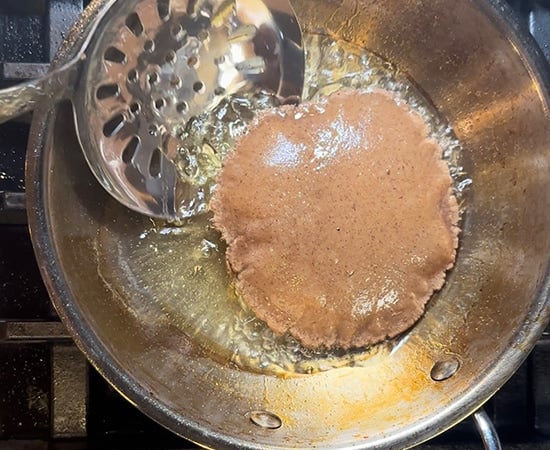
Serving Suggestions
If making these for fasts like Navratri, Ekadashi you can serve these with vrat wale aloo, dahi aloo, dahi arbi, and lauki sabzi.
If making them without fasting, enjoy them with chole and aloo rasedaar.
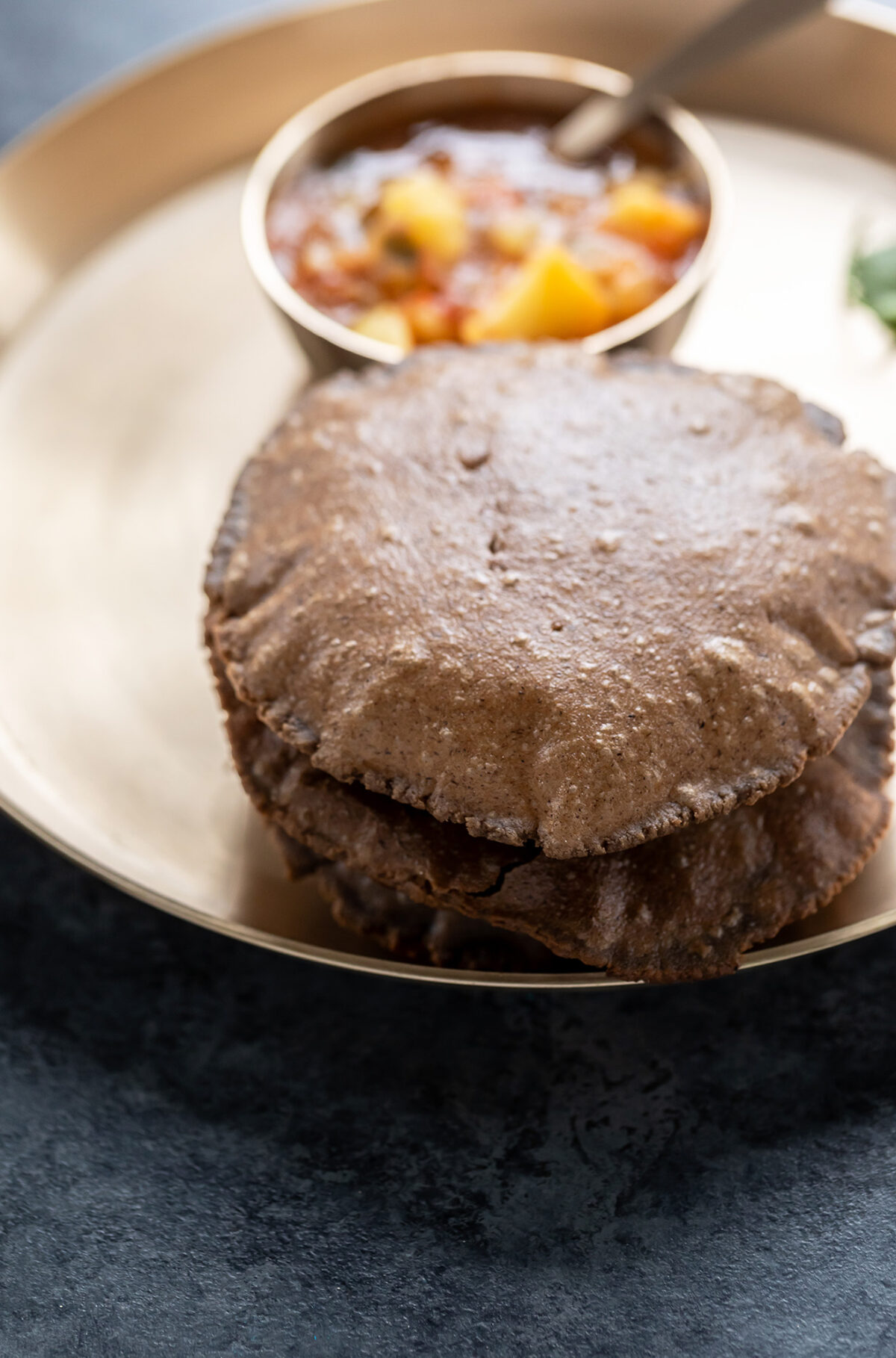
Manali’s Tips
- Dab a little oil on top of the dough ball before you start rolling it. This makes it easier to roll.
- When you roll the puri, make sure it is smooth and there are no cracks. If there are any gaps/cracks it will open up while you fry. The oil will seep in between the crack and your puri won’t puff.
- The kuttu ki puri taste best when enjoyed hot. If you let them cool down for a long time, they will harden. To reheat, wrap them in a moist paper towel and microwave for 15 to 30 seconds. They will be soft again.
- The thickness of these puris should be more than regular puri.
- This recipe was tested using the fine light brown color buckwheat flour that we find at Indian grocery stores. I have not tested this recipe with darker color buckwheat flour.
Kuttu ki Puri (Without Potatoes!)
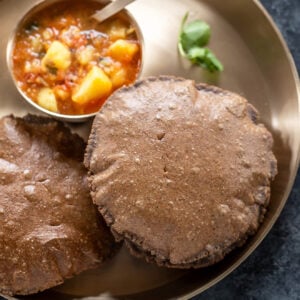
Ingredients
- 1 cup water 240 ml/8 oz
- ½ teaspoon salt or to taste, use sendha namak if making this for fast
- 1 teaspoon oil divided
- 2 cups buckwheat flour kuttu atta, 260 grams
- oil for deep frying the puris, I used avocado oil
Instructions
- To a pan on medium-high heat, add 1 cup water along with salt and 1/2 teaspoon oil. Let the water come to a boil.
- As soon as the water starts to boil, add 2 cups of kutta ka atta (buckwheat flour) to the pan and turn off the heat. Stir the flour with the water using a spatula and then cover the pan with a plate and let it sit for for 4 to 5 minutes.
- Remove the plate, the atta will look all crumbly and that's okay. Now, transfer the mixture to a large plate or paraat. The mixture will be easier to handle now as it has cooled down a bit.
- Start beinging the dough together using your hands. Add the remaining 1/2 teaspoon of oil and more warm water as needed to bring the dough together. I added additional 2 tablespoons of warm water at this point. Mix until you have a smooth dough then cover the dough and let it rest for 5 minutes.
- Now take a small portion from the dough (around 40 grams) and roll it between your palm to make a smooth round ball without any cracks. Flatten the ball by pressing it between your palm. Dab a little oil on top of the dough ball and start rolling it using a rolling pin.
- Roll the puri into a circle of around 5-inches in diameter. The thickness of these kuttu puris will be slightly more than regular wheat puris. You can use some dry buckwheat flour to dust the puris while rolling if they are sticking to the rolling pin. Because we boiled the water and scalded the flour, you will be able to roll the puris very easily using your regular chakla and belan. However if you are having trouble, you can roll between two sheets of parchment paper. Roll all the puris similarly.
- Heat 2 to 3 inches of oil in a kadai on medium heat. Drop a small portion of the dough in hot oil to check if the oil is ready for frying. If the small dough ball comes up immediately it means the oil is too hot. If it comes up gradually, it means it the right temperature. The temperature should also not be low else the puris will absorb a lot of oil and not puff up.
- Gently slide one rolled puri into the hot oil. Moving the slotted spoon on a circular motion, start pressing the puri so that it puffs up. Once puffed, flip and cook the other side as well. Drain the puri on a paper towel. Fry all the puris similarly. Serve kuttu ki puri with vrat wale aloo.
Notes
- Since we use hot water, this dough becomes really easy to roll simply with a rolling pin on a chakla or any surface. If you are having trouble, you can roll between 2 sheets of parchment paper.
- This recipe makes 12 to 14 puris depending on how big or small you make the puris.
Nutrition
Nutrition information is automatically calculated, so should only be used as an approximation.

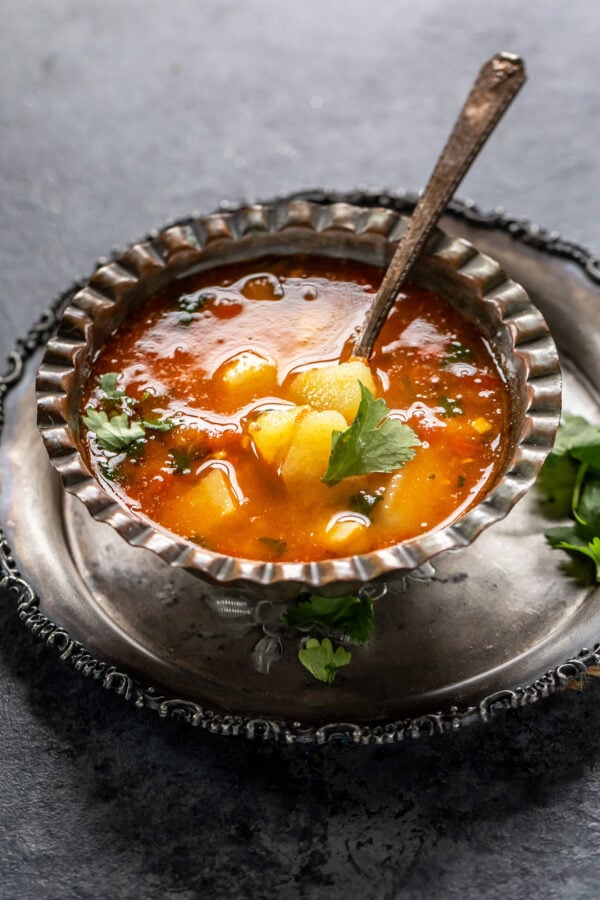
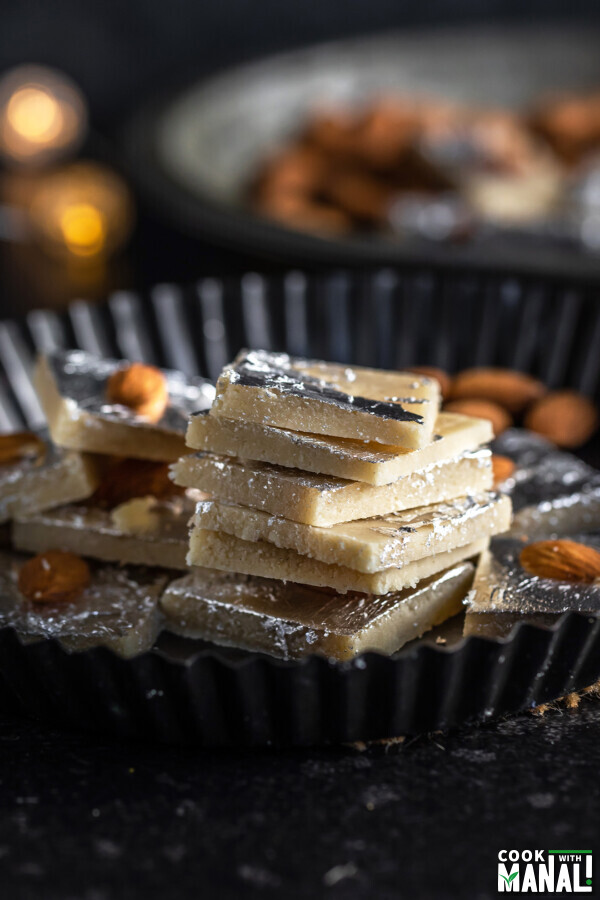
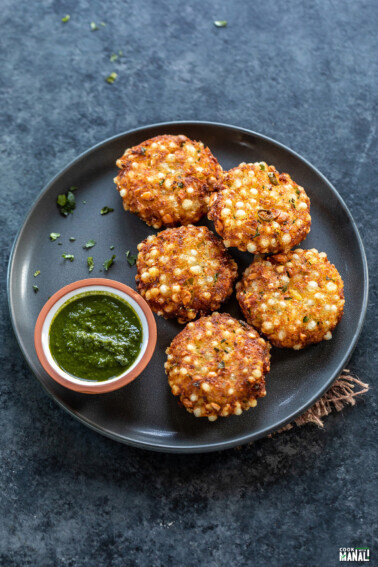
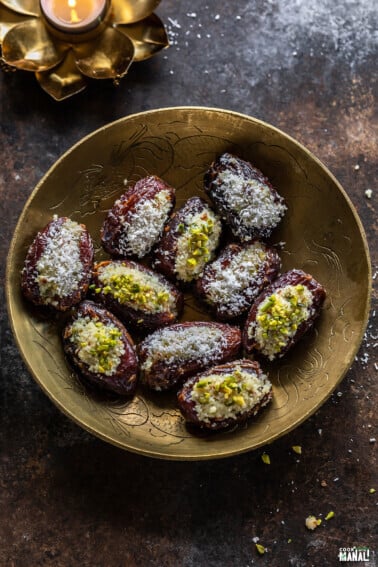









Can you use left over dough the next day?
I have not tried doing that but give it a try and let me know how it turns out.
Made these and it came out so so good. As always a huge fan of your recipes and this too was a big hit. Thankyou Manali for 100% best result recipes alwayz.
Thanks for the trust Nilisha, appreciate it 🙂